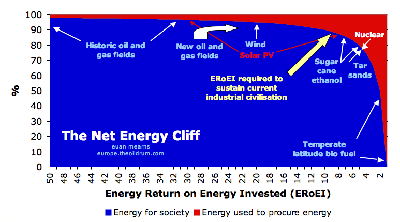Greenpeace opposes the construction of new nuclear power stations – of all kinds.
Firstly, Greenpeace’s opposition to nuclear power is not held as article of faith, or even an ideology, but on the legitimate concerns over the persistent threat that major releases due to accidents or terrorist attacks and the long-term threats radioactive waste presents to our biosphere and the proliferation of fissile materials. It is however crucially held on a pragmatic, realistic and evidence based approach to employing the most effective tools to tackle climate change and reduce our dependency on fossil fuels.
Back in December 2007 Rob Hopkins wrote about a free book, The Lean Guide to Nuclear Energy -- this essentially concludes that the planets nuclear power plants will never generate enough energy to power their own decommissioning -- this means that the nuclear industry is a fossil fuel energy sink not a source of power.
There are also doubts about the economics of it in the US:
A new study puts the generation costs for power from new nuclear plants at from 25 to 30 cents per kilowatt-hour — triple current U.S. electricity rates!
Furthermore, given that all the UK's nuclear plants are on the coast and will end up underwater I think people like Mark Lynas, James Lovelock and James Hansen are making a very big mistake by advocating more nuclear power plants.

